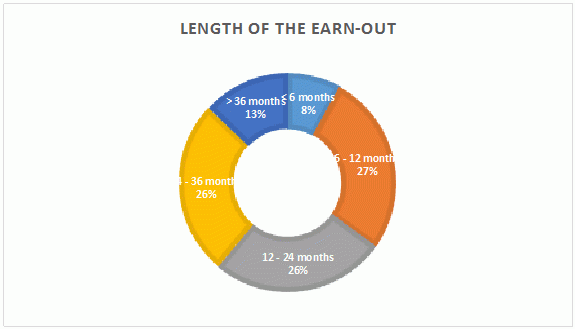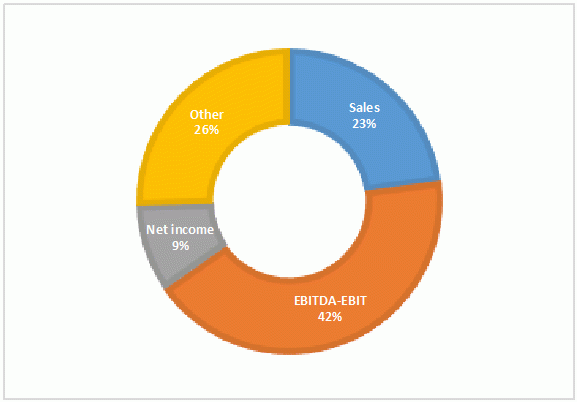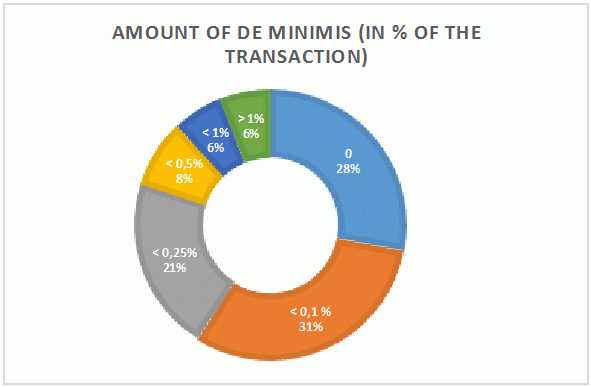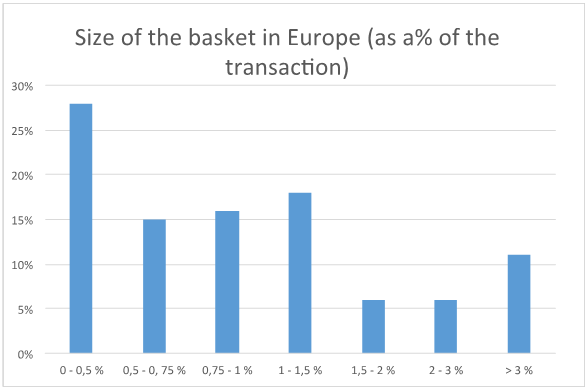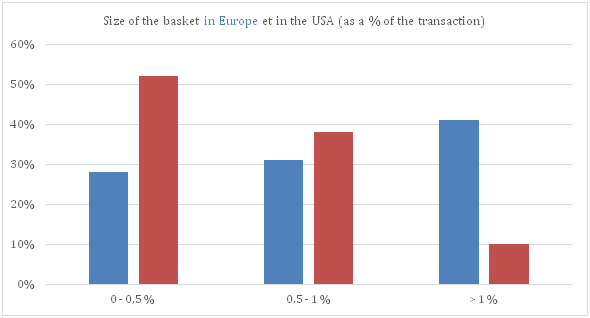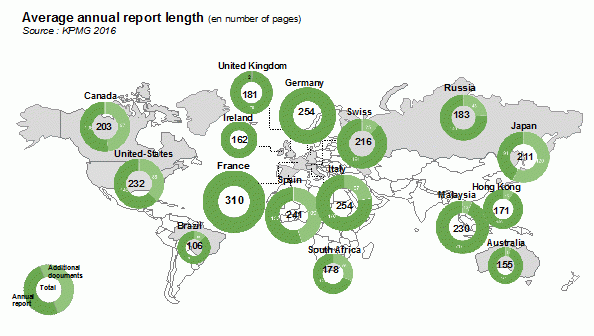Letter number 97 of October 2016
- TOPIC
- STATISTICS
- RESEARCH
- QUESTIONS & COMMENTS
News : The latest on the main clauses contained in SPAs for small and medium-sized M&A deals
Since 2008, lawyers from the CMS group have published a study on the main clauses included in sale and purchase agreements (SPAs) for M&A deals that they advise on in Europe, which are, for the most part, worth less than €100m. In total, 2,800 deals were analysed in depth, including 391 in 2015[1]. Comparisons with similar operations in the USA are made.
Price adjustment clauses were included in 78% of SPAs for European deals.
They can take two forms:
- An ordinary price adjustment which makes it possible to correct the price after transfer of the shares in the entity that is being sold (closing) on the basis of the financial statements drawn up at the time of the closing in relation to the price that was agreed at the time of signature of the SPA covering the shares in the entity (signing). The main adjustment factors are the change in working capital, change in net debt, changes in the difference between equity and fixed assets (same as the difference between working capital and net debt) or changes in net assets between these two dates.
- The locked box, a mechanism that provides the buyer with a guarantee that since the most recent financial statements that were disclosed and on the basis of which the price was determined (reference financial statements), there have been no leaks benefitting the seller (no dividends paid, no management fees, no share buybacks). This is the standard clause requiring that the target company be managed in accordance with the “prudent person” principle between the drawing up of the reference financial statements and closing[2].
In Europe, ordinary adjustment clauses are included in around half of all SPAs. Out of the remaining half, a locked box mechanism is put in place in 56% of cases. It provides a solid guarantee of visibility over the net price sellers will receive from the buyer, something which is really appreciated by private equity firms which are keen to pass on the proceeds of the sale to their investors as quickly as possible.
These two mechanisms are used all the more frequently as the size of the deal increases: they are not used in 27% of deals worth less than €25m, but in only 12% of deals worth more than €100m.
Although there is not much difference in the use of these mechanisms among European countries, the difference between Europe and the USA is striking. In the USA, the use of the purchase price adjustment mechanism in 86% of SPAs means that transactions in which the locked box mechanism is used are reduced to a very meagre share.
Earn-out clauses are on the increase but are only included in just under 20% of SPAs for European deals.
The size of the deal is a determining factor in the use of earn-outs[3]: they are used twice as frequently when deals are worth less than €100m (18%) than when deals are worth more than €100m (8%). The smaller the company, the stronger the link between its value and its management team. So it’s logical for the buyer to seek to smooth the transition and to protect itself against a loss in value due to the departure of the existing managers by incentivising them financially to stay on in order to benefit from the earn-out mechanism.
Unsurprisingly, it is for deals taking place in the most volatile sectors (life sciences, technologies, media, telecoms) that the earn-out mechanism is most frequently used – around one-quarter of deals. At the other end of the spectrum, they are practically never used for deals in sectors with good visibility such as infrastructures and hospitality. In such sectors there is no risk as future earnings are seen as easily predictable and relatively independent of the existing management team.
In 39% of cases, the earn-out clause covers a period of over 24 months:
and is based mainly on EBITDA or EBIT:
It is in Germany (25% of SPAs) and in Southern Europe (17%) that earn-out clauses are the most popular. But in the United Kingdom (12%), France (11%), and Eastern Europe (6%), they are less frequent. In the USA, earn-out clauses feature in over one-quarter of SPAs.
De minimis clauses are now included in SPAs for close to three-quarters of European deals.
Such clauses stipulate that an individual claim is only considered if its amount exceeds a given figure, referred to as the de minimis amount.
Very popular in the United Kingdom (included in 84% of SPAs), they are less popular in Central and Eastern Europe and in the Benelux countries (68%) and especially in France (37% in 2015, down from 69% in 2014). In the USA, the de minimis clause is far from being universally accepted, with only 37% of SPAs including such a clause.
In just over half of all cases, the de minimus amount is less than 0.25% of the value of the deal:
A claims basket in 72% of SPAs, which in 80% of cases results in payment in line with the first euro method, and in 20% of cases in an excess that is equal to the basket.
In the United Kingdom, the Benelux countries and the German-speaking countries, the most frequently used mechanism is that of payment in line with the first euro method for losses suffered once the basket has been exceeded by the accumulation of individual claims.
Conversely, in France, in Eastern European countries and in the USA, the system of excess prevails (in half of all deals in France and in 65% in the USA): the buyer is only indemnified if the amount exceeds the basket which thus constitutes an excess.
Additionally, we see in the USA that the average basket is much lower than in Europe, which makes it, from this point of view, a country that is less advantageous for sellers.
SPAs for only 11% of European deals do not contain clauses capping warranties provided by the seller.
It is very rare for the seller’s warranty not to be capped. This is mainly the case for the acquisition of companies that are struggling or carrying a lot of debt and whose equity value is low or even negative. Generally, the amount of the cap depends on the amount of the deal and in 58% of European deals the warranty is capped at less than 50% of the deal value. But in 11% of deals there is no cap and for 23% of deals, the cap is equal to the value of the deal itself.
This is very different from the situation in the USA where 92% of deals have a warranty cap that is less than 25% of the value of the deal (39% in Europe).
And only 15% of SPAs make provision for a period of more than two years. In France, however, this figure rises to 40%. The bigger the deal, the shorter the period during which a claim can be made. Only 5% of deals worth more than €100m have a claim period of more than two years.
One-third of deals include a seller’s warranty which mainly takes the form of an escrow agreement.
Getting a seller’s warranty is a good thing for the buyer. Being able to implement this warranty, if needed, and getting indemnification from the seller is even better. This raises the issue of the seller’s solvency after completion of the deal and throughout the warranty period.
The most popular method for achieving this is the escrow account (63% of deals), followed by the withholding of part of the price by the buyer (20% but which raises the issue of buyer solvency post deal) and the bank guarantee for 17% of deals.
Increasing popularity of insurance covering the seller’s warranty which is taken out in 22% of deals worth more than €100m.
Used very often by sell-side private equity firms, which are keen to set the definitive net sale price and not be called on subsequently to pay out sums that have already been returned to their investors[4]. In these cases, it is the insurance company that pays up. It is also of interest to a buyer that has reservations about the solvency of the seller post sale. Only used for 7% of deals worth less than €25m.
In SPAs that contain such clauses, the insurance covers 28% of the purchase price at a cost of 1 to 2% of the amount covered.
An arbitration clause is included in more than one-third of SPAs, a figure that has remained stable over time.
An arbitration clause enables the parties to avoid submitting any disputes that may arise to the courts, which are often seen as unpredictable when it comes to making rulings, public and slow, making arbitration bodies an attractive alternative.
This practice is virtually never used in France and the United Kingdom, but is widespread in Eastern and Southern European countries. In the USA, 15% of deals include arbitration clauses.
Material Adverse Change (MAC) clauses remain marginal in Europe (16% of deals) compared with the USA where they are practically automatic (91% of cases).
A MAC clause will allow the buyer to withdraw from a deal that has been signed but not yet closed, by arguing that there has been a material adverse change in the environment, the economic context, etc. It is being used more and more in France (26% of cases) and in the Benelux countries (22%), but not in the United Kingdom where it is very rare (7% of deals).
The larger the deal, the more likely the chances of a MAC clause being included in the SPA – 30% of deals worth more than €100m.
[1] This study is not available in electronic form but can be obtained from www.cms-bfl.com.
[2] For more on own the locked box, see Vernimmen.com Newsletter No 64 January 2012.
[3] For more on own earn out, see Chapter 46 of the Vernimmen.
Statistics : The volume of annual reports worldwide
If it were an Olympic sport, France could easily be a Gold Medal winner! With an average of 310 pages compared with 204 elsewhere in the world, at least it keeps the paper manufacturers happy!
To be fair, the French practice of turning the annual report into a reference document for many listed groups (over half of those listed on Euronext Paris) explains this situation. We teach our students that before lending to or becoming a shareholder of a company, they must read its annual report, because one can acquire or deduce a lot of information from an annual report, even if all of it is not always useful. Well that’s what we do anyway.
Research : Convertible bonds: a farewell to call delays
With Simon Guegen, lecturer-researcher at the University of Paris Dauphine
Convertible bond agreements generally include a clause that enables the issuer to force early conversion. According to the main convertible bond valuation models[1], it is in the issuer’s best interest to force conversion as soon as possible. However, until the mid-2000s, we saw long delays between the date on which conversion could be forced and the date on which it actually was forced (the call delay). A recent article offers an explanation for this behaviour on the part of convertible bonds issuers: dividends[2].
The intuition of the result, according to which the call delay should be as short as possible, is as follows. By forcing conversion, the issuer removes the dual advantage of holders of convertible bonds of being protected against a fall in the price of the underlying security (possibility of requesting repayment instead of conversion) and of possibly benefitting from additional income if the coupons are worth more than the dividends. Researchers in finance have come up with different explanations for empirically observed call delays that are not inconsequential (and that can even be long, often several months).
Some of these explanations cannot be attributed to dividends. For example, the risk of a failed call: if the value of the underlying security falls suddenly during the few days between the announcement of early conversion and the conversion itself, bondholders will chose reimbursement in cash (the value of which will thus be higher than the underlying security). The issuer would prefer to wait until the value of the underlying security exceeds the redemption price by a large enough margin so that the risk of a failed call is very low.
Other explanations can be attributed to the issuer’s dividends policy. In some cases, when expected dividends are higher than the coupons, it may be in the bondholder’s interest to convert the bonds (voluntarily). It can happen that some of these bondholders, which we’ll call “sleeping investors” do not request conversion. In this case, it is not in the interest of the existing shareholders to waken the sleepers! Furthermore, it is possible that conversion costs may be slightly lower in the case of a voluntary conversion compared to a forced conversion.
Another parameter that should be taken into account is taxation: it is coupons net of tax (not gross of tax) that the issuer should compare with dividends. If the tax advantage of the debt is high, it may be preferable not to force conversion too early.
Finally, one explanation (Grundy & Verwijmeren’s preferred explanation) depends on the signalling effect of the call delay. If the issuer is pessimistic about the future value of dividends, it will prefer to force conversion quickly rather than authorise bondholders to continue to receive coupons that are worth more than dividends. Accordingly, failing to force conversion acts as a credible signal on the part of the issuer that future dividends will be high.
The empirical part of the article raises the fact that the way in which convertible bond agreements are drafted changed during the course of the 2000s, and that they now include a “protection against dividends” clause. When a dividend is paid, the conversion rate is adjusted so that payment of the dividend (which reduces the market value of the underlying security by as much) does not impact on the value of the convertible bond. The study sample covers convertible bonds issued between 2000 and 2008 (and converted before 2012). In 2000, none of the agreements in the sample made provision for such protection. This figure rose from 0% to 61% in 2003, and then 100% as of 2005. Out of the whole sample, the call delay in trading days is 67 for unprotected convertible bonds, and close to zero (less than three trading days) when protection is in place.
Conclusions can be drawn from these results. The first conclusion is technical: call delays were mainly explained by dividends. By protecting convertible bonds from the effects of dividend payments, new agreements encourage behaviour by the issuer that complies with predictions found in valuation methods: forced conversion as soon as possible. Since practically all new bond issues include such protection, it is highly unlikely that call delays will be making a come-back. The second conclusion is more general: issuing a signal could frequently encourage behaviour that is not easily explained by models which overlook information asymmetries.
[1] Especially J.E. INGERSOLL (1977), “A contingent-claims valuation of convertible securities”, Journal of Financial Economics, vol. 4, p. 289 to 322.
[2] B.D. GRUNDY and P. VERWIJMEREN (2016), “Disappearing call delay and dividend-protected convertible bonds”, Journal of Finance, vol. 71-1, p. 195 to 224.
Q&A : Why do LBO funds make use of revolving credit lines?
This is a recently developed technique which enables LBO funds to improve their IRR, which means that fund managers will receive more carried interest[1].
These revolving credit lines should not be confused with debt contracted by the holding company that controls the company under LBO or by the latter itself, a portion of which may be of a revolving nature. The two are unrelated.
The LBO fund holds off requesting funds from its limited partners for a few quarters and funds its investment in the LBO holding company by drawing down its revolving credit lines which will be reimbursed when the limited partners contribute their share of the holding company’s equity financing. These credit lines are available for one year, but no longer. Often funds use them so that they only have to call on the limited partners once a year, which means that the latter’s contributions are made on a single date during the year for several investments done by the fund.
Revolving credit lines are also used to reduce the amount of time between signing and closing that it takes for the proceeds of the sale of the investments to reach the limited partners. When there are no anti-trust issues, this usually takes a few months. A fund which is not anticipating any problems between signing and closing can draw down on its revolving credit line, pay the proceeds of the sale which have not yet been received to the limited partners as soon as the SPA has been signed, and reimburse its revolving credit line once the sale closes in a few months’ time.
Accordingly, the limited partners make their contributions at a later date and receive their returns sooner, which is where the increase in their IRR comes from.
Overall, more debt is put into the LBO, either at a time when the company under LBO has not yet demonstrated its potential, or at a time when the value of the investment is evident because a third party has signed an agreement to acquire the investment. In the former case, the providers of the revolving credit line firstly take the risk that the LBO fund’s limited partners will renege on their commitments, which is a diversified risk (there are several limited partners) and which happens very infrequently because this would destroy the reputation of any investor who behaves in this way. In the latter case, the risk is that of an unexpected issue arising between signing and closing, with an asset that has deleveraged and for which a price has just been determined. This is not entirely risk free, but is certainly not the most risky banking operation around.
So, we get more leverage during a period of very low interest rates and a risk level that is well below that of an LBO, which is very tempting for LBO funds and for lenders. Nevertheless, for the moment, this practice is still rather limited.
It is in no way related to the pre-2007 equity bridge, where the LBO’s lending banks guaranteed part of the LBO’s equity, pending the syndication of these shares with other LBO funds. It would be hard to find a better way of increasing lenders’ risk!
[1] For more on carried interest, earnings made by of LBO fund managers, see chapter 46 of the Vernimmen
